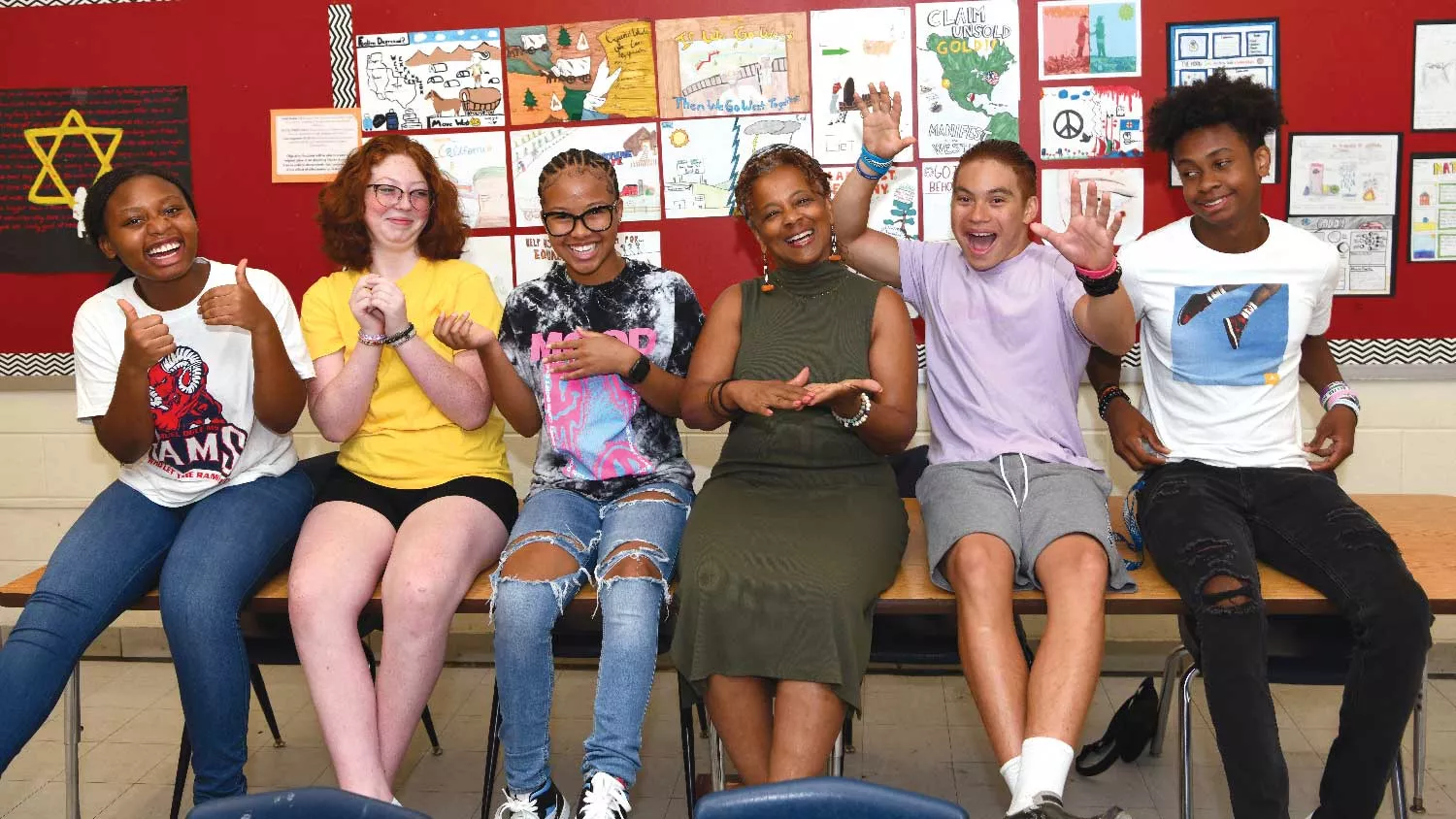In an elementary school in Kodiak, Alaska, a group of students demonstrates their understanding of a butterfly’s metamorphosis. One balls up on the floor (the egg), another stretches out (the caterpillar), another kneels with arms wrapped tightly around herself (the pupa), and finally a student stands with arms spread wide (the butterfly about to take flight). They are acting out the stages in a “tableau”—a still picture created with the positioning of bodies.

“Tableau is an arts integration strategy that not only reinforces a concept students are learning, but it’s great for teaching collaboration and cooperation,” says JoAnne Knight, an art teacher and the arts and culture coordinator for Kodiak public schools.
The name comes from the term tableau vivant, which means “living picture.” Students communicate concepts through dramatic arts techniques, such as poses, gestures, and facial expressions, rather than words. It is especially effective for kinesthetic learners—who learn by interacting with their environment—and allows all students to be creative while also reinforcing comprehension.
“The reason I have such a passion for this work, and with adolescents, is that they like to create, come up with their own concepts, and form their own thoughts, rather than having somebody telling them what to think. Arts integration enables them to do that while [learning] the required curriculum.”
— Ann-Marie Maloney, reading and English language arts teacher, Prince George’s County, Maryland
After lessons in reading, math, science, or social studies, students can work together in one- to five-minute challenges to form tableaus that tell the story of what they’ve learned.
“One of our teachers even asked students to demonstrate baking bread in a tableau, and I thought, no way, but they did it!” Knight says. “They totally understood the process, showing the shapes of the bowl, the measuring cups, the yeast rising, and the baked loaf of bread.” In tableau, she explains, kids are taught the art form itself and then use it to demonstrate knowledge. It can be an instant assessment tool.
What is Arts Integration?
According to the Institute for Arts Integration and STEAM (IAS), this framework involves using the arts to teach and assess content standards equitably.
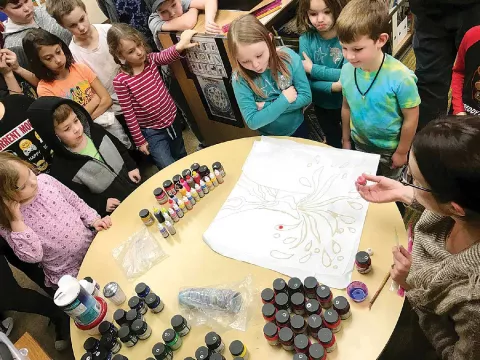
Teachers incorporate a range of art forms into standard lessons, providing students with different learning styles, languages, or cultures with more ways to communicate what they know, beyond paper and pencil or keyboard and screen.
“The standards are there to follow and are vertically aligned to move students through the grades,” Knight says. “But throw art into the mix, and the classroom lights up with sparks of imagination.”
AII research shows that achievement increases by 10 percent across the board in schools that use the technique. It also makes teaching and learning more fun for educators and students alike, allowing educators to take standard curriculum and infuse it with creativity, inspiration, and innovation.
Knight and her colleagues found that arts integration is also an excellent retention tool. With the help of a 10-year grant (they’re now in year seven), the district sought to support early career teachers with arts integration training and mentoring, as a way to build their confidence and competence.
“Now a lot of our teachers regularly integrate art into lessons, it’s just part of their method of teaching,” Knight says.
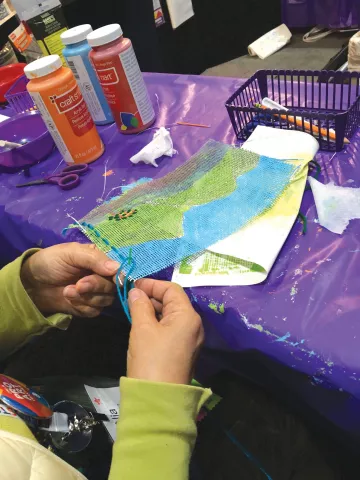
In math lessons, for example, students have created circle paintings, using circles of different sizes to represent different areas. In geometry lessons, they create abstract art with angles and other shapes. In addition to writing out formulas on paper, they’re creating pieces of artwork,” Knight says.
The key to arts integration is to teach music, drama, and visual arts along with subject-area concepts across the disciplines.
As part of an art lesson, students learn geometry by creating abstract art pieces, while also learning about abstract artists throughout history and how math relates to their work. They’ll learn about the painting process, color theory, mixing colors—even how to care for paintbrushes.
Some of the Kodiak district’s practices come from the Kennedy Center’s art education resources (kennedy-center.org/education), including a science lesson where students dance the water cycle.
“They kick their shoes off, get out there, and use their bodies to show condensation, evaporation, and other stages,” says Knight, adding that some students even choreograph their own dances. “This lesson is common in the early elementary years, like second and third grade. It might not work for middle school kids who are more self-conscious.” Inspire students of all ages On the opposite side of the country, in Prince George’s County, Maryland, reading and English language arts teacher Ann-Marie Maloney doesn’t pretend it’s easy to work with middle schoolers, but she and her students definitely have fun in the classroom. As the lead arts integration teacher at Samuel Ogle Middle School, she introduces the concept from day one in her classes.
Maloney is all too familiar with the tweens’ and teens’ monotone style of reading literature and poetry.
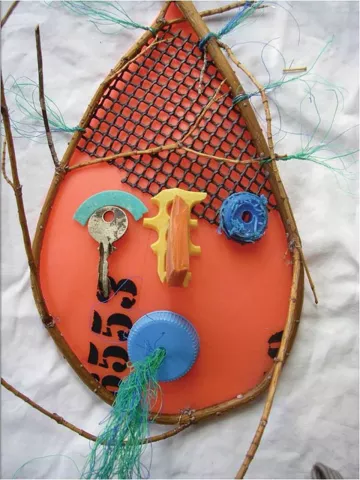
“They are a shy bunch, and they don’t like to speak up,” she acknowledges. “To get them out of their shells, I start at the beginning of the school year and, by the winter, they’re performing slam poetry.”
The first exercises are dramatic arts, so the students can learn how to act when they’re reading a story, play, or poem.
Her favorite warm-up exercises? “Your mom or dad just told you they won a million dollars. How do you react? What does your face look like? What are you doing with your body?” Or, “Your best friend is moving, and you’ll never see each other again. What does your face look like?”
“I tell them to dramatize it with their body, to give me an emotion,” Maloney says. “They build on that, and it also has an SEL component, as they express different emotions.”
In Maloney’s English class, students read the play The Diary of Anne Frank. She knows it’s a text that some eighth graders are not going to read on their own or even enjoy when they have to read it in school. But using dramatic arts, students perform the play just as actors would.
Maloney forms eight groups of students, with each group getting a line. They have to collaborate to dramatize each line sequentially and come up with gestures. Let the students lead Maloney, who has taught for 22 years, used to dress up as characters from the books she taught.
“I’d dress up, bring in props—anything to pique their interest and get them reading.”
But she was doing all the work to try to engage them. With arts integration, students are in charge of creating the art.
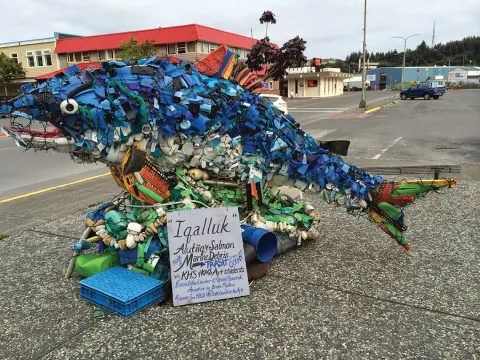
“The reason I have such a passion for this work, and with adolescents, is that they like to create, come up with their own concepts, and form their own thoughts, rather than having somebody telling them what to think,” she says. “Arts integration enables them to do that while [learning] the required curriculum.”
To teach about different perspectives in poetry and literature, for example, Maloney shows an image of the painting “Watson and the Shark,” by John Singleton Copley. She asks the students: What do you think is happening? Are they trying to save him? Did they throw him overboard? What do you see? What do you think? What do you wonder?” These are artful-thinking strategies from Harvard University’s Project Zero that encourage students to consider their perspective in anything that they are presented with, Maloney explains. “We want them to question everything.”
For Shakespeare, whose language turns off most middle schoolers, she throws the class into the middle of the conflict. She has them act out scenes and come up with motivations and feelings they may experience as well: Is a character suffering from mental illness, experiencing low self-esteem or insecurity, or feeling jealous or afraid? Then how do you act that out?
When her class reads The Outsiders, they each design a cover as part of a lesson on theme.
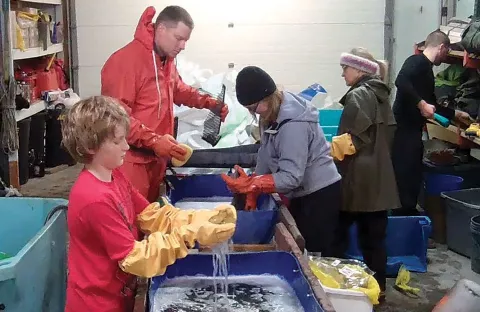
They study artwork such as Janet Taylor Pickett’s “Matisse Blue Dress” collage. Pickett uses the dress in Matisse’s famous “Lady in Blue” painting to tell the story of her journey as a contemporary African American woman. Students then design collage templates that tell their personal stories.
The key ingredient to successful arts integration is engagement, Maloney says. “Where would we be—students and adults—without our soundtracks, those links to our life experiences? Where would we be without dance, sports, movement, expression?” she asks.
Humans have a need for self-expression and interaction, so it’s unrealistic to expect students to just sit passively and absorb information, she says.
“Students have innate gifts and desire to do—as well as a desire to do well,” Maloney adds. “Give them a leadership position, and they will run with it. That’s our goal as educators, is it not?”
Five Reasons to Use Arts Integration Strategies
- Creates Student Buy-In When the arts are intentionally integrated into classes, students become active participants in their learning. Students can own their learning and have a vested interest in their success.
- Builds Critical Thinking Skills Students construct personal meaning through arts-integration. They develop problem-solving skills and the ability to innovate. This builds grit and perseverance.
- Empowers Educators and Students Instructors become facilitators of creative learning and are empowered in their professional growth. Educators feel fulfilled and able to provide a hands-on learning environment for students.
- Affords Equity Yields an equitable learning environment for all students by providing multiple access points.
- Provides Connective Learning Furnishes a research-based pathway to teaching 21st-century learning skills and natural avenues for differentiation. Under the guidance of teaching artist Erica Ross, students at Chiniak School, in Alaska, create silk paintings that connect to the reading curriculum.
(Strategies provided by the Institute for Arts Integration and STEAM (IAS))
Learn More
You Are an Artist!
You don’t need to be artsy to use arts integration in your classes. It’s easier than you may think, and the payoffs are huge. Find out how at nea.org/artsintegration.
